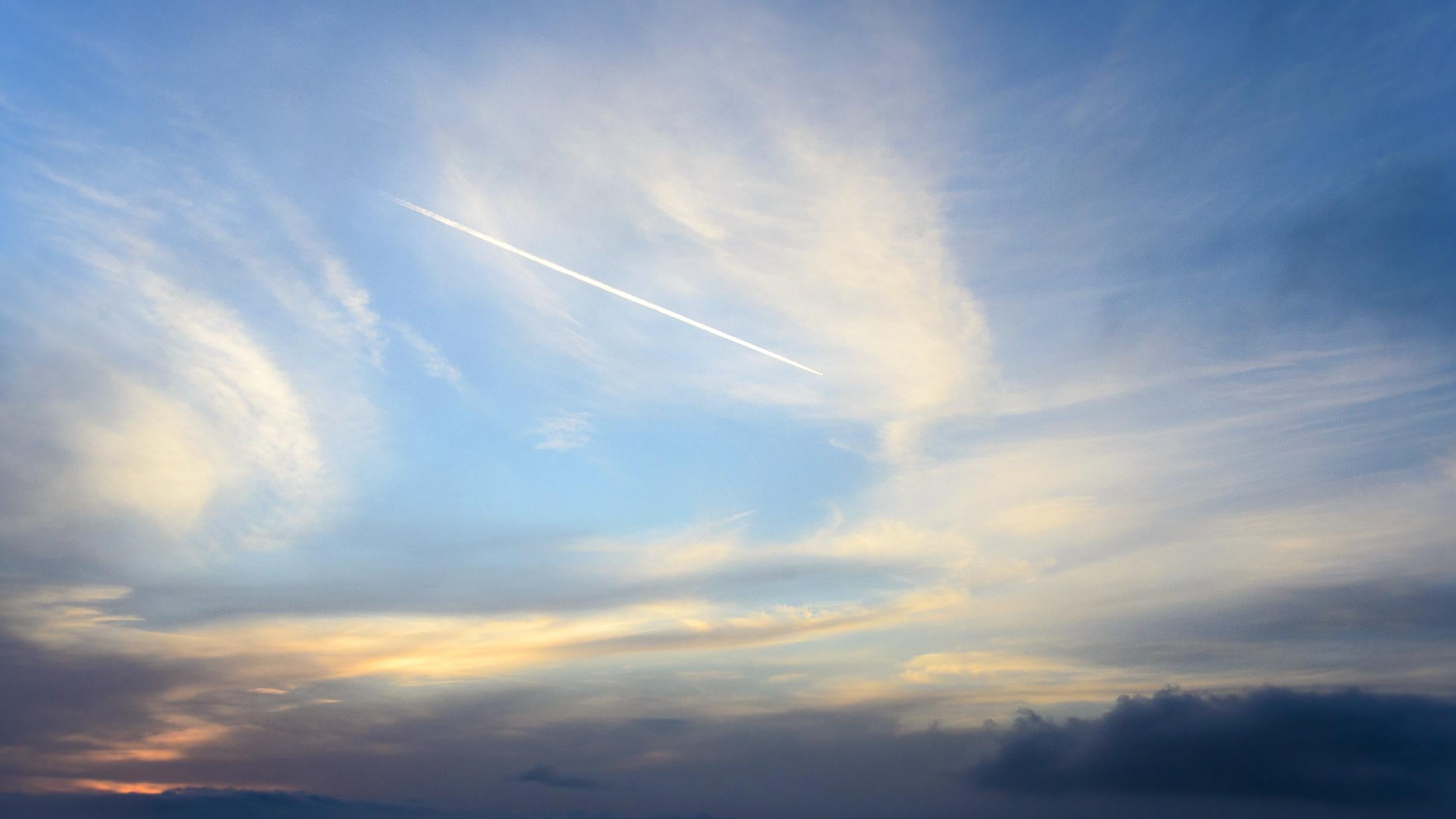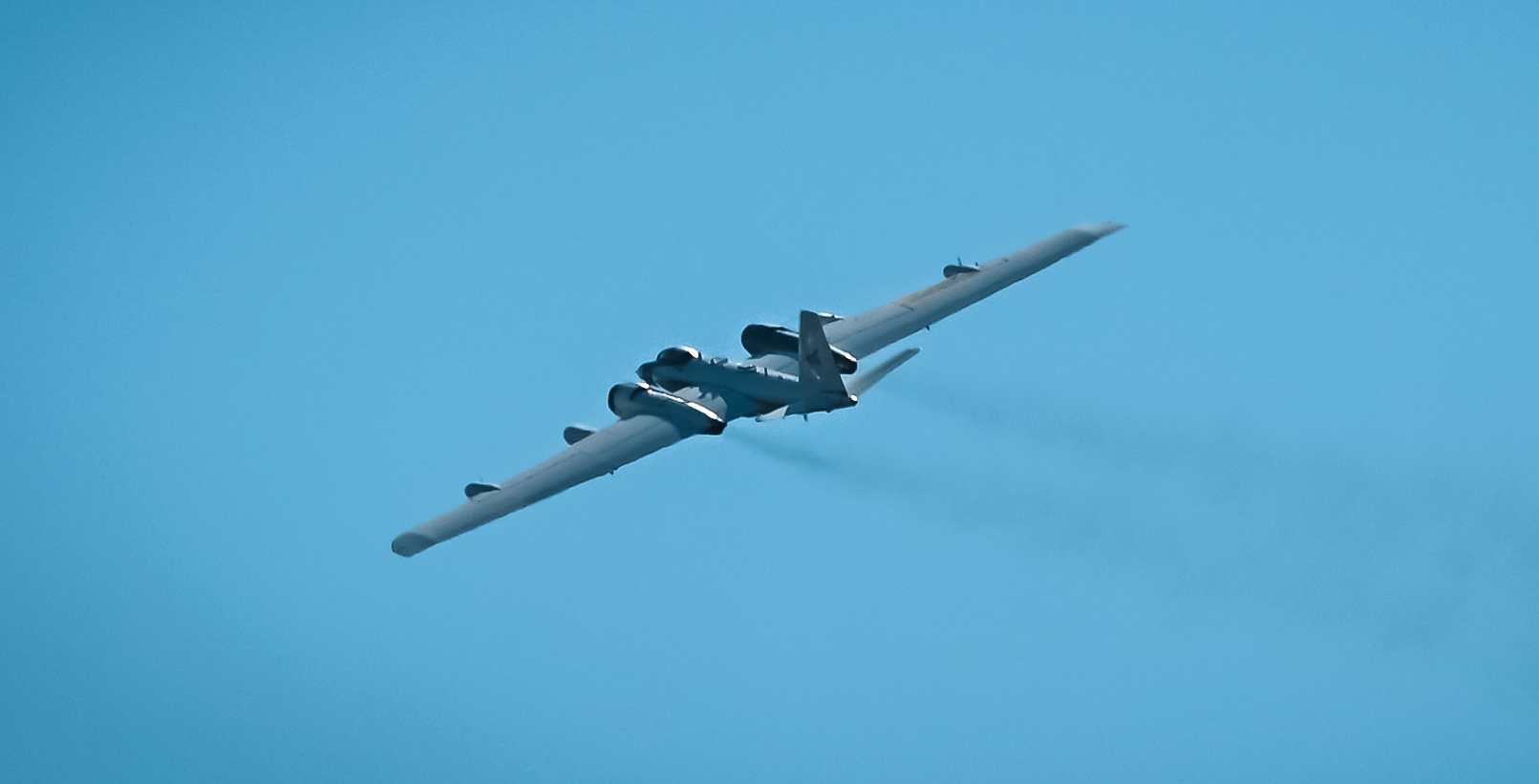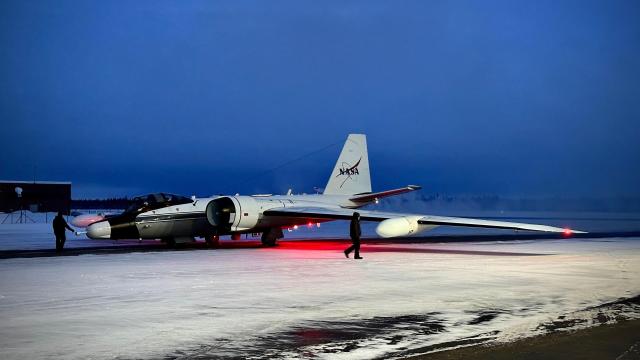Solar geoengineering is a controversial strategy to block sunlight from reaching Earth in order to slow down climate change, with one of the leading proposals involving adding reflective particles to the stratosphere. But before humanity makes any more big changes to our atmosphere, it would probably be a good idea to try to understand it. At least, that’s the idea behind a recent National Oceanic and Atmospheric Administration mission involving a retrofitted bomber aircraft from the 1950s.
On March 27, NOAA concluded the first leg of its SABRE (stratospheric aerosol processes, budget, and radiative effects) project. Through the mission, the agency aims to make a dent in the dearth of data we have on Earth’s stratosphere, in hopes of resolving some big lingering mysteries.
For one, federal researchers want to get a better idea of how much rocket launches alter the stratosphere. Another question: What proportion of what’s floating around up there comes from meteorites? How are worsening wildfires changing things? Then, there’s an even bigger, overarching puzzle. NOAA is trying to find out, one way or the other, if deeply controversial proposals to geoengineer the atmosphere are a good idea or not.
“SABRE is happening because we want to have a baseline of the stratosphere,” Gregory Frost, a NOAA atmospheric and climate scientist and program manager, told Gizmodo in a March phone call. The last time there was a large, federally funded campaign to assess the upper atmosphere was about 20 years ago, Frost explained. In the interim, there’ve been lower-resolution satellite observations, “but they’re not very specific,” he added.
“It’s been a long time, so we wanted to go back. Technology is improved and our instruments are a lot better. We’re able to measure things we couldn’t measure before.”

The basics of the SABRE mission: NOAA flies a high-altitude, retrofitted vintage war plane equipped with all sorts of test instruments through the stratosphere at different latitudes. The equipment on board collects intel on the chemical makeup of that critical yet understudied layer of atmosphere — measuring concentrations and behaviour of different aerosols, water vapour, particulates, and other compounds circulating there.
Ideally, funding pending, the scientists are hoping to conduct three sets of flights to capture a wide range of data from all over the world. The stratosphere isn’t uniform globally. It changes elevations depending on where you are. Even the age of air varies based on latitude — the closer to the poles, the older the circulating stratospheric particles are. But even with just one leg done, more information is imminent.
In the first, recently ended segment of the project, the SABRE crew was based out of an Alaskan U.S. Air Force base, and flights focused on the polar atmosphere. Between February 28 and March 27, NOAA completed numerous multi-hour forays into the stratosphere. The flights took place at such high elevation and low atmospheric pressure that the pilot and single other back-seater on board had to wear astronaut-style pressure suits. Minor complications aside, it all went well.
There were some equipment challenges and other kinks to work out, said Troy Thornberry, an atmospheric chemist at NOAA and one of the co-science leads on SABRE, in a call with Gizmodo. In fact, there was some uncertainty surrounding whether or not the Alaska flights would be able to move forward as planned at all, because of “heightened sensitivity due to geopolitical events” back in February, said Thornberry. He didn’t specify what those events were, but the timing certainly lines up with with the Chinese spy balloon saga.

Nevertheless, the SABRE plane gathered what scientists were hoping to get: mountains of data on the stratosphere. It took Thornberry more than two minutes just to list all of the different chemical species and types of information that the decked-out aircraft collected information on. Using all these new measurements, NOAA researchers will try to figure out what different compounds are doing up there. The ultimate goal: apply these findings to geoengineering, which hinges on the idea that injecting certain aerosols in the upper atmosphere could minimise some of the worst impacts of climate change.
“The situation with climate is becoming increasingly dire,” said Frost. We need to reduce greenhouse gas emissions, he emphasised. But holding onto climate stability might also require removing carbon from the atmosphere or adding reflective compounds into the atmosphere to lower Earth’s temperature. To NOAA (and NASA, which collaborated on SABRE), solar geoengineering isn’t a far-flung sci-fi idea — it’s a an increasingly likely tool for forestalling climate catastrophe.
Yet all of the present models about, say, injecting sulphur aerosols into the stratosphere, are lacking real-world atmospheric data, Frost said. “If that were to happen, we want to better understand what the implications would be…. If the world decides to start adding aerosols, we [want to] know how things are going to change.”
Upon looking at the preliminary results, some new information is already apparent, Thornberry said. That question about meteorites — it seems like the answer is, yes, lots of the particles in the polar stratosphere have celestial origins — who knew! The old air above Alaska and the Arctic appears to be full of chemical signatures from space bits. Other atmospheric intelligence is also on the way.
Months from now, when all of the SABRE data has been cleaned-up, processed, and made publicly available, researchers worldwide will be able to truth many of their past atmospheric predictions and start making better ones. The answers to the enigma of our stratosphere are officially in the works. And a new level of clarity on how we can or should strive to change the atmosphere is forthcoming.
